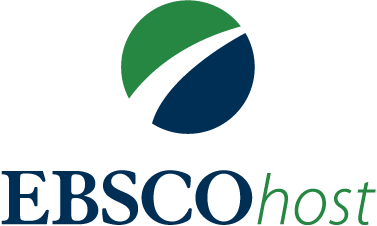An Empirical Study to Examine Transaction Costs Emerging in Strategic Airline Alliances
Abstract
Airline firms are aimed to create alliances to decrease operational costs and increase flight networks to benefit from economies of scale, scope and density. However, most of the firms involved in airline alliances, on the one hand, decrease the flight costs, but on the other hand, they have to deal with unpredicted transaction costs. In the scope of this study, 59 airline businesses involved in one of the global airline alliances have been investigated through the transaction cost approach. The research was conducted with 85 middle and top-level managers of global airline alliance businesses, and data was collected through an online survey. Data were analyzed using the PLS-YEM program within the framework of the theoretical model created with partner trustworthiness, opportunistic behaviour and alliance outcome. The hypotheses constructed were tested using the structural equation model according to the structure of the data. As a result of the analysis, it was concluded that all the basic assumptions of the transaction cost approach were supported. It was found that the partner reliability variable gave a statistically significant result in estimating the opportunistic behaviour and the opportunistic behaviour in predicting the cooperation outcome.
Metrics
References
Adams, J. (2004). ‘Wachovia and partners speed corporate billing’, Bank Technology News, 17(4), 31–32.
Apte, U., C. Beath and C Goh (1999). ‘An analysis of the production line versus the case manager approach to information intensive services’, Decision Sciences, 30(4), pp. 1105–1129. DOI: https://doi.org/10.1111/j.1540-5915.1999.tb00920.x
Arrow, K. J. (1983). The Organization of Economic Activity: Issues Pertinent to the Choice of Market Versus Nonmarket Allocation. In Collected Papers of Kenneth J. Arrow. Volume 2. Cambridge, Mass.: Belknap.
Arndt J. (1979) Towards a Concept of Domesticated Markets, J. Marketing. 43(4): 69-75 DOI: https://doi.org/10.1177/002224297904300408
Aubert, B.A., Rivard, S. and Patry, M. (2004), “A transaction cost model of IT outsourcing”, Information and Management, 41(7), 921-32. DOI: https://doi.org/10.1016/j.im.2003.09.001
Bello, D.C. and Zhu, M. (2006), “Global marketing and procurement of industrial product: institutional design of interfirm functional tasks”, Industrial Marketing Management, 35(5), 545-55. DOI: https://doi.org/10.1016/j.indmarman.2005.10.008
Bengtsson, L. and Berggren, C. (2008a), “The integrator’s new advantage – the reassessment of outsourcing and production competence in a global telecom firm”, European Management Journal, 26(5), 314-24. DOI: https://doi.org/10.1016/j.emj.2008.05.001
Berquist, W., Betwee, J., & Meuel, D. (1995). Building Strategic Relationships, Jossey-Bass Publishers
Bradach J. L. & Eccles, R. G. (1989). Price, authority, and trust: From ideal types to plural forms. Annual Review of Sociology, 15, 97-118. DOI: https://doi.org/10.1146/annurev.so.15.080189.000525
Bromiley, P. & Cummings, L. L. (1995). Transactions costs in organizations with trust. Research on Negotiation in Organizations, 5, 219-247.
Byrne, B.M. (2008), Structural Equation Modeling with EQS: Basic Concepts, Applications, and Programming. New York, NY. Psychology Press.
Cher Hung Tseng, Liang Tu Chen, (2013) "Firm capabilities as moderators of transaction cost factors and subsidiary domestic outsourcing", Management Decision, 51(1), 5-24, https:// doi.org/10.1108/00251741311291283 DOI: https://doi.org/10.1108/00251741311291283
Das, T. K. and B. S. Teng (2000a). ‘Instabilities of strategic alliances: An internal tensions perspective’, Organization Science, 11(1), 77–101. DOI: https://doi.org/10.1287/orsc.11.1.77.12570
Das, T. K. and B. S. Teng (2000b). ‘A resource-based view of strategic alliances’, Journal of Management, 26(1), 31–61. DOI: https://doi.org/10.1177/014920630002600105
Dasgupta, P. (1988). Trust as a commodity. In D. Gambetta (Ed.), Trust: Making and breaking cooperative relations, San Francisco: Jossey-Bass, 257-286
Dawkins, R. (1989). The Selfish Gene. 2d ed. New York: Oxford University Press.
Dickmann, M., Tyson S., (2005) "Outsourcing payroll: beyond transaction cost economics", Personnel Review, 34(4), 451-467, Permanent link to this document: https://doi.org/10.1108/00483480510599770 DOI: https://doi.org/10.1108/00483480510599770
Doğan, D., (2019). SmartPLS ile Veri Analizi (2. Baskı). Ankara: Zet Yayınları.
Dore, R. (1983). Goodwill and the spirit of market capitalism. British Journal of Sociology, 34, 459-482. DOI: https://doi.org/10.2307/590932
Doz, Yves L. (1996). The Evolution of Cooperation in Strategic Alliance: Initial Conditions or Learning Processes? Strategic Management Journal. 17: 55-83. DOI: https://doi.org/10.1002/smj.4250171006
Dyer, J. H. and H. Singh (1998). ‘The relational view: Cooperative strategy and sources of interorganizational competitive advantage’, Academy of Management Review, 23, 660–679. DOI: https://doi.org/10.5465/amr.1998.1255632
Dyer J.H, Kale P, Singh, H., (2001). How to Make Strategic Alliances Work: Developing a dedicated alliance function is key to building the expertise needed for competitive advantage. Sloan Management Review. 42(4): 37-43.
Dyer, J. H., & Chu, W. (2003). The role of trustworthiness in reducing transaction costs and improving performance: Empirical evidence from the United States, Japan, and Korea. Organization Science, 14(1), 57-68. DOI: https://doi.org/10.1287/orsc.14.1.57.12806
Earl, B., (2014) Basics of Social Research, Wadsworth Cangega Learning, Sixth Edition
Ellram, L. and Billington, C. (2001), “Purchasing leverage considerations in the outsourcing decision”, European Journal of Purchasing & Supply Management, 7(1), 15-27. DOI: https://doi.org/10.1016/S0969-7012(00)00004-6
Fussell, H., Harrison J.,Rexrode, Kennan W., R., Hazleton, V., (2006) "The relationship between social capital, transaction costs, and organizational outcomes: A case study", Corporate Communications: An International Journal,11(2), 148-161, https://doi.org/10.1108/13563280610661688 DOI: https://doi.org/10.1108/13563280610661688
Garson, G.D., (2016). Partial Least Squares: Regression and Structural Equation Models. Asheboro, NC: Statistical Associates Publishers. https://www.smartpls.com/resources/ebook_on_pls-sem.pdf (Erişim Tarihi: 23.08.2019).
Ghertman, M. (1998). Measuring Macro-Economic Transaction Costs: A Comparative Perspective and Possible Policy Implications. Working paper, Jouy en Josas, France: École des Hautes Études Commerciales.
Gilley, K.M. and Rasheed, A. (2000), “Making more by doing less: an analysis of outsourcing and its effects on firm performance”, Journal of Management, 26 (4), 763-90. DOI: https://doi.org/10.1177/014920630002600408
Glaister KW, Buckley PJ. 1996 Strategic Motives for International Alliance Formation; J. Management Studies, 33(3): 301-332 DOI: https://doi.org/10.1111/j.1467-6486.1996.tb00804.x
Gomes-Casseres B. (1994) “Group Versus Group: How Alliance Networks Compete”, Harvard Business Review. July-August, 62-74.
Gomes-Casseres B. (1996) The Alliance Revolution: The New Shape of Business Rivalry, Cambridge, MA: Harvard University Press.
Granovetter, M. (1985). Economic action and social structure: The problem of embeddedness. American Journal of Sociology, (91), 481-510. DOI: https://doi.org/10.1086/228311
Gulati, R. and H. Singh (1998). ‘The architecture of cooperation: Managing coordination costs and appropriation concerns in strategic alliances’, Administrative Science Quarterly, 43, 781–814. DOI: https://doi.org/10.2307/2393616
Haeussler, C., Patzelt, H., & Zahra, S. A. (2012). Strategic alliances and product development in high technology new firms: The moderating effect of technological capabilities. Journal of Business Venturing, 27(2):217–233. DOI: https://doi.org/10.1016/j.jbusvent.2010.10.002
Hair, J., & Ringle, C., & Sarstedt, M., (2013). Partial Least Squares Structural Equation Modeling: Rigorous Applications, Better Results and Higher Acceptance. Long Range Planning. 46. 1-12. DOI: https://doi.org/10.1016/j.lrp.2013.01.001
Hair J., Sarstedt M., & Kuppelwieser, V., (2014), Partial Least Squares Structural Equation Modeling (PLS-SEM): An Emerging Tool for Business Research., European Business Review, 26(2), 106-121 DOI: https://doi.org/10.1108/EBR-10-2013-0128
Hair, J. F., Lucy, M.M., Ryan, L. M., Sarstedt, M. (2017a), PLS-SEM or CB-SEM: updated guidelines on which method to use, International Journal of Multivariate Data Analysis, 1(2), 107-123 DOI: https://doi.org/10.1504/IJMDA.2017.10008574
Hair, J.F., Hult, G.T.M., Ringle, C.M. ve Sarstedt, M. (2017b). A Primer on Partial Least Squares Structural Equation Modeling (PLS-SEM) (2. Baskı). Los Angeles: Sage.
Hamel, G., Doz, Y. & Prahalad, C. (1989). Collaborate with your competitors and win. Harvard Review Jan/Feb, 133-139
Hart, P., & Saunders, C. (1997). Power and trust: Critical factors in the adoption and use of electronic data interchange. Organization Science, (8), 23-42. DOI: https://doi.org/10.1287/orsc.8.1.23
Heide, J.B., & John, G. (1992). Do norms matter in marketing relationships? Journal of Marketing, 56 (2), 32-35. DOI: https://doi.org/10.2307/1252040
Heiman, B. and J. Nickerson (2002). ‘Towards reconciling transaction cost economics and the knowledge-based view of the firm: the context of interfirm collaborations’, International Journal of Economics of Business, 9(1), 97–116. DOI: https://doi.org/10.1080/13571510110103001
Henseler, J., Hubona, G. ve Ray, P. (2016). Using PLS Path Modeling in New Technology Research: Updated Guidelines. Industrial Management & Data Systems. 116. 2-20. 10.1108/IMDS-09-2015-0382, Retrieved 25.08.2019 from Emerald Database. DOI: https://doi.org/10.1108/IMDS-09-2015-0382
Hill, C. W. l. (1999). International Business: Competing in the global market place, third edition, McGraw-Hill
Hoskisson, R.E., Eden, L., Lau, C.M. and Wright, M. (2000), “Strategy in emerging economies”, The Academy of Management Journal, 43(3), 249-67. DOI: https://doi.org/10.5465/1556394
Hu, L.-t., ve Bentler, P. M. (1998). Fit indices in covariance structure modeling: Sensitivity to underparameterized model misspecification. Psychological Methods, 3(4), 424-453. DOI: https://doi.org/10.1037/1082-989X.3.4.424
Jeffrey AF, Andrew K. (1996) Currency Crashes in Emerging Markets: An Empirical Treatment, J. Int. Economics. 41( 3-4): 351-366 DOI: https://doi.org/10.1016/S0022-1996(96)01441-9
John, G. (1984). An empirical investigation of some antecedents of opportunism in a marketing channel. Journal of Marketing Research, 21, 278-289. DOI: https://doi.org/10.1177/002224378402100305
Judge, W. Q., and Dooley, R., (2006) Strategic Alliance Outcomes: A transaction- Cost Economics Perspective, British Journal of Management, 17: 23-37 DOI: https://doi.org/10.1111/j.1467-8551.2005.00441.x
Judge, W. and J. Ryman (2001). ‘The shared leadership challenge in strategic alliances: Lessons from the U.S. healthcare industry’, Academy of Management Executive, 15(2), 71–79. DOI: https://doi.org/10.5465/ame.2001.4614907
Kale, P. and P. Puranam (2004). ‘Choosing equity stakes in technology sourcing relationships: An integrative framework’, California Management Review, 46(3),77–99. DOI: https://doi.org/10.2307/41166222
Kim, W. C. and R. A. Mauborgne (1993). ‘Procedural justice, attitudes, and subsidiary top management compliance with multinationals’ corporate strategic decisions’, Academy of Management Journal, 36, pp. 502–527. DOI: https://doi.org/10.5465/256590
Kogut B. (1998) International Business: The New Bottom Line, Journal of Foreign Policy, JSTOR publication. 110: 152-165. DOI: https://doi.org/10.2307/1149283
Kotabe, M. and Murray, J.Y. (1996), “Determinants of intra-firm sourcing and market performance”, International Business Review, 5(2), 121-35. DOI: https://doi.org/10.1016/0969-5931(96)00001-7
Kwon, I. G., & Suh, T. (2004). Factors affecting the level of trust and commitment in supply chain relationships. Journal of Supply Chain Management, 40 (2), 4-14. DOI: https://doi.org/10.1111/j.1745-493X.2004.tb00165.x
Leiblein, M.J. and Miller, D.J. (2003), “An empirical examination of transaction- and firm-level influences on the vertical boundaries of the firm”, Strategic Management Journal, 24(9), 839-59. DOI: https://doi.org/10.1002/smj.340
Li, H., Arditi, D. and Wang, Z. (2013), “Factors that affect transaction costs in construction projects”, Journal of Construction Engineering and Management, 139 (1):60-68. DOI: https://doi.org/10.1061/(ASCE)CO.1943-7862.0000573
Li, H., Arditi, D. and Wang, Z. (2015), “Determinants of transaction costs in construction projects”, Journal of Civil Engineering and Management, 21(5): 548-558. DOI: https://doi.org/10.3846/13923730.2014.897973
Lin S. H. (1976), Rain-Rate Distributions and Extreme-Value Statistics, Wiley Online Library DOI: https://doi.org/10.1002/j.1538-7305.1976.tb02931.x
Lorange, P. & Roos, J. (1993). Strategic Alliances: Formation, Implementation and Evaluation. Blackwell Business
Luo, Y. (2005), “Transactional characteristics, institutional environment and joint venture contracts”, Journal of International Business Studies, 36(2), 209-30. DOI: https://doi.org/10.1057/palgrave.jibs.8400125
Luo, Y. and Peng, M.K. (1999), “Learning to compete in a transition economy: experience, environment, and performance”, Journal of International Business Studies, 30(2), 269-96. DOI: https://doi.org/10.1057/palgrave.jibs.8490070
Macher, J.T. and Richman, B.D. (2008), “Transaction cost economics: an assessment of empirical research in the social sciences”, Business and Politics, 10(1):1-63. DOI: https://doi.org/10.2202/1469-3569.1210
Madhok, A., & Tallman, S.B. (1998). Resources, transactions and rents: Managing value through interfirm collaborative relationships. Organization Science, 9: 326–339. DOI: https://doi.org/10.1287/orsc.9.3.326
Masten, S. E. (1982). Transaction Costs, Institutional Choice and the Organization of Production. PhD thesis, University of Pennsylvania.
Mayer, R. and J. Davis (1999). ‘The effect of performance appraisal system on trust for management: A field quasiexperiment’, Journal of Applied Psychology, 84, pp. 123–136. DOI: https://doi.org/10.1037/0021-9010.84.1.123
Mayer, K.J. and Salomon, R.M. (2006), “Capabilities, contractual hazards, and governance: integrating resources and transaction cost perspectives”, Academy of Management Journal, 49(5), 942-59. DOI: https://doi.org/10.5465/amj.2006.22798175
McCartney, S. (2004). ‘How to fly business class for half the price’, Wall Street Journal-Eastern Edition, 243(83), 28 April, D1.
Mjoen, H. and S. Tallman (1997). ‘Control and performance in international joint ventures’, Organization Science, 8, 257–274. DOI: https://doi.org/10.1287/orsc.8.3.257
Mockler R.J. (1999). Multinational Strategic Alliances, Willey, New York.
Mol, M., Pauwels, P., Matthyssens, P. and Quintens, L. (2004), “A technological contingency perspective on the depth and scope of international outsourcing”, Journal of International Management, 10(2), 287-305. DOI: https://doi.org/10.1016/j.intman.2004.02.005
Mollering, G. (2002). Perceived trustworthiness and inter-firm governance: Empirical evidence from the UK printing industry. Cambridge Journal of Economics, 26 (2), 139-160. DOI: https://doi.org/10.1093/cje/26.2.139
Murray, J.Y. and Kotabe, M. (1999), “Sourcing strategies of US service companies: a modified transaction-cost analysis”, Strategic Management Journal, 20(9), 791-809. DOI: https://doi.org/10.1002/(SICI)1097-0266(199909)20:9<791::AID-SMJ49>3.0.CO;2-U
Murray, J.Y., Kotabe, M. and Wildt, A.R. (1995a), “Strategic and financial performance implications of global sourcing strategy: a contingency analysis”, Journal of International Business Studies, 26 (1),181-202. DOI: https://doi.org/10.1057/palgrave.jibs.8490171
Murray, J.Y., Wildt, A.R. and Kotabe, M. (1995b), “Global sourcing strategies of US subsidiaries of foreign multinationals”, Management International Review, Vol. 35 (4), 307-24.
Naomi Wangari Mwai, Joseph Kiplang’at, David Gichoya, (2014) "Application of resource dependency theory and transaction cost theory in analysing outsourcing information communication services decisions: A case of selected public university libraries in Kenya", The Electronic Library, 32(6), 786-805, DOI: https://doi.org/10.1108/EL-09-2012-0112
Ning, Y. (2018), “Impact of quality performance ambiguity on contractor’s opportunistic behaviors in person-to-organization projects: the mediating roles of contract design and application”, International Journal of Project Management, 36(4):640-649. DOI: https://doi.org/10.1016/j.ijproman.2018.01.008
Ouchi, W. G. (1979). A conceptual framework for the design of organizational control mechanisms. Management Science, 25 (9), 833-848. DOI: https://doi.org/10.1287/mnsc.25.9.833
Ouchi, W. G. (1980). Markets, bureaucracies, and clans. Administrative Science Quarterly, 25, 129-145. DOI: https://doi.org/10.2307/2392231
Pak, Y.S. and Park, Y.R. (2005), “Characteristics of Japanese FDI in the East and the West: understanding the strategic motives of Japanese investment”, Journal of International Business Studies, 40(3), 254-66. DOI: https://doi.org/10.1016/j.jwb.2005.05.003
Pangarkur, N. and S. Klein (2001). ‘The impacts of alliance purpose and partner similarity on alliance governance’, British Journal of Management, 12, 341–353. DOI: https://doi.org/10.1111/1467-8551.00214
Parkhe, A. (1993b). ‘Strategic alliance structuring: A game theoretic and transaction cost examination of interfirm cooperation’, Academy of Management Journal, 36, 794–829. DOI: https://doi.org/10.5465/256759
Patton, M. Q., (2005). Qualitative Research, John Wiley & Sons
Pellicelli AC. (2003) “Clusters and Global Value Chain in the North and Third World”, Facolia Economia, Workshop Paper. Novara 30/31
Perrow, C. (1986). Complex organizations: A critical essay. New York: McGraw-Hill.
Preacher, K., J., & Hayes A., F., (2008), Asymptotic and resampling strategies for assessing and comparing indirect effects in multiple mediator models, Behavior Research Methods, 40, 879-891. DOI: https://doi.org/10.3758/BRM.40.3.879
Ring, P. S. and A. Van de Ven (1994). ‘Developmental processes of cooperative Interorganizational relationships’, Academy of Management Review, 19, 90–118. DOI: https://doi.org/10.5465/amr.1994.9410122009
Ring, P. S., & Van de Ven, A. H. (2000). Formal and informal dimensions of transactions. In Van de Van, A. H., Angle, H. L., & Poole, M. S. (Eds.), Research on the management of innovation: The Minnesota studies. 171-192. New York: Oxford University Press.
Shane, S. A. (1992). The effect of cultural differences in perceptions of transaction costs on national differences in the preference for licensing. Management International Review, 32 (4), 295-312. DOI: https://doi.org/10.5465/ambpp.1992.17515164
Shelanski, H.A. and Klein, P.G. (1995), “Empirical research in transaction cost economics: a review and assessment”, Journal of Law, Economics & Organization, 11(2),335-361.
Simon, H. A. (1991). Organizations and markets. Journal of Economic Perspectives, 5 (2), 25-44. DOI: https://doi.org/10.1257/jep.5.2.25
Singh, N., (2008) "Transaction costs, information technology and development", Indian Growth and Development Review, 1(2) ,212-236, https://doi.org/10.1108/17538250810903792 DOI: https://doi.org/10.1108/17538250810903792
Skarmeas, D., Katsikeas, C. S., & Schlegelmilch, B. B. (2002). Drivers of commitment and its impact on performance in cross-cultural buyers-seller relationships: The importer’s perspective. Journal of International Business Studies, 33 (4), 757 -783. DOI: https://doi.org/10.1057/palgrave.jibs.8491043
Spekman, R. E., Salmond, D. J., & Lambe, C. J. (1997). Consensus and collaboration: Normregulated behaviour in industrial marketing relationships. European Journal of Marketing, 31 (11/12), 832. DOI: https://doi.org/10.1108/03090569710190569
Troy, K. and L. Schein (1995). ‘The quality culture: Manufacturing versus services’, Managing Service Quality, 5(3), 45–55. DOI: https://doi.org/10.1108/09604529510796403
Tsai, M.C., Liao, C.H. and Han, C.S. (2008), “Risk perception on logistics outsourcing of retail chains: model development and empirical verification in Taiwan”, Supply Chain Management: An International Journal, 13 (6), 415-24. DOI: https://doi.org/10.1108/13598540810905679
Varadarajan PR, Clark T, Pride WM. (1992) Controlling the Uncontrollable: Managing Your Market Environment, Sloan Management Review, 33(2): 39-47.
Wallis, J. J. and D. C. North. (1986). Measuring the Transaction Sector in the American Economy, 1870-1970. In Long-Term Factors in American Economic Growth. Studies in Income and Wealth Series, edited by S. L. Engerman and R. E. Gallman. Chicago: University of Chicago Press.
Webster FE. (1992) The Changing Role of Marketing in the Corporation. J. Marketing. 56(4): 1-17 DOI: https://doi.org/10.1177/002224299205600402
Wheelen LT, Hunger D.(2003) Essentials of Strategic Management; McGraw-Hill, New York.
Williamson, O. E. (1975). Markets and Hierarchies: Analysis and Antitrust Implications. New York: Free Press.
Williamson, O. E. (1985). The Economic Institutions of Capitalism. New York: Free Press.
Williamson, O. E. (1993). Opportunism and Its Critics. Managerial and Decision Economics 14 (2): 97-107. DOI: https://doi.org/10.1002/mde.4090140203
Williamson, O. E. (1994). Transaction cost economics and organization theory. In N. J. Smelser & R. Swedberg (Eds.), The handbook of economic sociology Princeton, NJ: Princeton University Press, 77-107
Williamson O. E. Transaction Cost Economics (1997): The Governance of Contractual Relations, J. Law and Economics. 22(2): 233-261 DOI: https://doi.org/10.1086/466942
Xinming He, Zhibin Lin, Yingqi Wei, (2016) "International market selection and export performance: a transaction cost analysis", European Journal of Marketing, 50 (5/6), 916-941, https://doi.org/10.1108/EJM-02-2013-0083 DOI: https://doi.org/10.1108/EJM-02-2013-0083
Yigitbasioglu, O., M., (2010) "Information sharing with key suppliers: a transaction cost theory perspective", International Journal of Physical Distribution & Logistics Management, 40(7), 550-578, https://doi.org/10.1108/09600031011072000 DOI: https://doi.org/10.1108/09600031011072000
Zajac, E.J., Olsen, C.P., (1993). From transaction cost to transactional value analysis: implications for the study of interorganizational strategies. Journal of Management Studies 30, 132–145. DOI: https://doi.org/10.1111/j.1467-6486.1993.tb00298.x






















